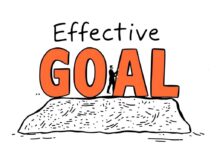The power of slowing down to speed up

Prioritize intentional pauses throughout your day to enhance concentration and sustain energy levels. Allocate time for short breaks, allowing the mind to reset and refocus. Research shows that even brief moments of rest can significantly improve cognitive performance, reducing errors and increasing overall output.
Establishing a rhythm that includes periods of rest fosters clarity in thought processes. This approach encourages deeper engagement with tasks at hand, transforming how one approaches challenges. Intentional breaks serve not only as a mental refresh but also as a means to align actions with overarching goals.
Consider integrating techniques such as the Pomodoro Technique: work intensely for 25 minutes followed by a 5-minute break. This structure helps maintain high energy levels while ensuring that focus remains sharp. By consciously deciding when to step back, productivity becomes less about constant motion and more about strategic action.
Understanding Mindful Work Practices
Integrate short breaks into your schedule. Allocate specific intervals throughout the day to step away from tasks, allowing the mind and body to recharge. This practice enhances focus and creativity, which are often diminished by prolonged periods of work without rest.
Establish clear intentions before commencing any task. Take a moment to define what you aim to accomplish, which helps in aligning your energy with your goals. Clarity breeds efficiency and reduces distractions that may arise during execution.
Consider implementing mindfulness techniques such as deep breathing or meditation between tasks. These methods can significantly enhance mental clarity and emotional balance, leading to improved decision-making capabilities.
Aim for balance in your workload. Recognize signs of burnout early on and adjust your pace accordingly. Prioritizing well-being contributes directly to sustained performance over time.
Incorporate reflection at the end of each day. Assess accomplishments and areas needing improvement while maintaining a sense of gratitude for progress made. This fosters a positive mindset conducive to ongoing development and resilience in future tasks.
Setting Realistic Daily Goals
Identify three key tasks each morning that align with your long-term objectives. Prioritize these based on urgency and importance to channel your focus effectively.
Allocate specific time blocks throughout the day for each task. This structured approach allows you to harness your energy while minimizing distractions.
Incorporate short breaks between tasks to recharge. A few minutes of rest can enhance concentration, ensuring sustained progress throughout the day.
Practice intention by reflecting on your accomplishments at the end of the day. This helps reinforce a sense of purpose and guides future goal-setting.
Aim for achievable outcomes rather than perfection. Setting realistic expectations fosters motivation and prevents burnout, ultimately leading to more consistent success.
Creating Focused Work Environments
Establishing a conducive workspace is paramount for enhancing concentration and balance. Here are actionable steps to cultivate an environment that nurtures energy and intention:
- Designate Specific Zones: Create areas specifically for tasks, brainstorming, or relaxation. This segmentation helps the mind associate spaces with particular activities.
- Control Distractions: Limit noise and visual clutter. Use noise-canceling headphones or soft music to maintain focus while keeping surfaces tidy.
- Optimize Lighting: Natural light boosts mood and energy levels. Position desks near windows and use adjustable lighting for different tasks, ensuring comfort throughout the day.
- Add Personal Touches: Incorporate elements that inspire you, such as art or plants. These personalizations enhance emotional connection to the space, driving motivation.
Incorporating these strategies fosters an atmosphere where productivity thrives through intentional actions and clear focus. Establishing boundaries between work and rest enhances overall effectiveness.
- Create a Routine: Develop a consistent daily schedule that aligns with your energy peaks. Identify when you feel most alert and structure demanding tasks during those times.
- Practice Mindfulness Techniques: Integrate short breaks for breathing exercises or meditation to recharge your focus. A few minutes of stillness can significantly boost clarity.
The right environment nurtures not just productivity but also well-being. Prioritize creating spaces that resonate with your values and intentions, leading to heightened performance over time.
Incorporating Breaks Wisely
Schedule breaks with intention. Aim for short, frequent pauses rather than infrequent long ones. A five-minute break every 25 to 30 minutes maintains focus and prevents mental fatigue.
During these intervals, engage in activities that promote balance. Stand up, stretch, or take a brief walk; this refreshes your mind and body. Avoid screens during rest periods to reduce cognitive overload.
Consider using techniques like the Pomodoro Technique: work intensely for 25 minutes, then rest for five. After four cycles, take a longer break of 15 to 30 minutes to recharge fully.
Integrate mindfulness practices into breaks. Spend a few moments on deep breathing exercises or meditation to regain clarity and enhance concentration when returning to tasks.
Track how breaks impact your focus throughout the day. Adjust timing based on personal productivity rhythms; some may find they need more frequent rests while others benefit from longer stretches of uninterrupted work.
Ultimately, balancing work and rest is key. Prioritize recovery time as it significantly boosts overall performance and creativity in subsequent tasks.
Measuring Progress with Reflection
Implement a weekly review session. Dedicate time to assess accomplishments and setbacks, allowing space for genuine evaluation. This practice cultivates clarity and intention in future tasks.
Utilize journaling as a tool for self-assessment. Document daily thoughts, feelings, and achievements to identify patterns and areas needing adjustment. Reflecting on this information fosters balance between ambition and reality.
Set aside moments throughout the day for short pauses. Use these breaks to recalibrate focus, breathing deeply while contemplating ongoing projects. This pause enhances awareness of progress and redirects energy where necessary.
Incorporate metrics that resonate personally. Whether tracking completed tasks or hours spent in deep work, having tangible data supports understanding personal productivity levels and encourages intentional changes.
Engage in conversations with peers or mentors about experiences and insights gained from various tasks. These dialogues can reveal blind spots and lead to innovative approaches while reinforcing accountability.







